"Miyazaki Model" Avian Influenza Alert Comprised of Drone Water Sampling and Breakthrough Analysis Technology
Professor Kentaro Yamada of CADIC (Department of Veterinary Science, Faculty of Agriculture) at University of Miyazaki, calls out to the drone pilot, guiding the drone to the landing point on the water. Using the drone, pond water is collected as one aspect of research in which any signs of an avian influenza epidemic are quickly assessed by collecting environmental samples including water and the excrement of migratory birds, and running virus checks.
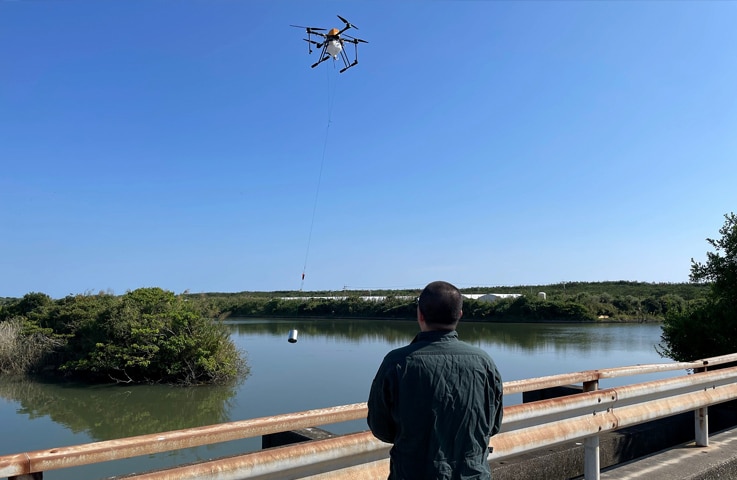
A member of Professor Yamada’s team operates the drone
Protecting Farmers and Chickens
Once an outbreak of avian influenza occurs, to prevent the spread of the infection, all the chickens at infected poultry farms must be culled, a ban must be put in place on the movement of chicken meat and eggs, and an extensive area must be sterilized. The culling of vast numbers of chickens is heartbreaking, and the stress and other damage to the livelihoods of the people who work in the poultry industry are incalculable. The fact is that this also has a significant impact on our dinner tables.
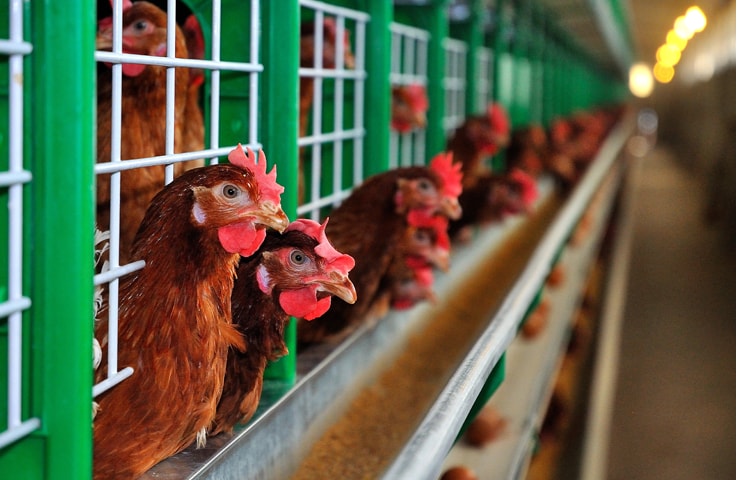
In Miyazaki Prefecture, avian influenza outbreaks have occurred any number of times. The Japanese Ministry of Agriculture, Forestry and Fisheries issues information routinely, and poultry farmers take basic countermeasures. However, continuously maintaining a system constantly in a state of readiness is difficult as it leads to vigilance fatigue.
More effective countermeasures would no doubt be possible if special alerts could be issued about times and places requiring vigilance. From this line of reasoning, in Miyazaki Prefecture, steps are being taken to construct a model in which avian influenza virus inflow routes and developments are predicted, alerts are issued, and various governmental bureaus and farmers in the prefecture collaborate to take epidemic prevention measures.
At CADIC of University of Miyazaki, there have been issues regarding virus detection, including the amount of water collected, and pretreatment techniques. The amount of virus increases as the amount of water collected increases, but time and effort are required for treatment. For this reason, methods are needed to detect the virus with high sensitivity in small amounts of water.
Successful Virus Detection from the Collected Water Samples
In terms of virus concentrations in sewage, the COPMAN method developed by AdvanSentinel provides fast and stable virus collection. Previously, when analyzing water samples collected with a drone, Professor Yamada had successfully detected avian influenza virus genes (M and H5) using the COPMAN method.
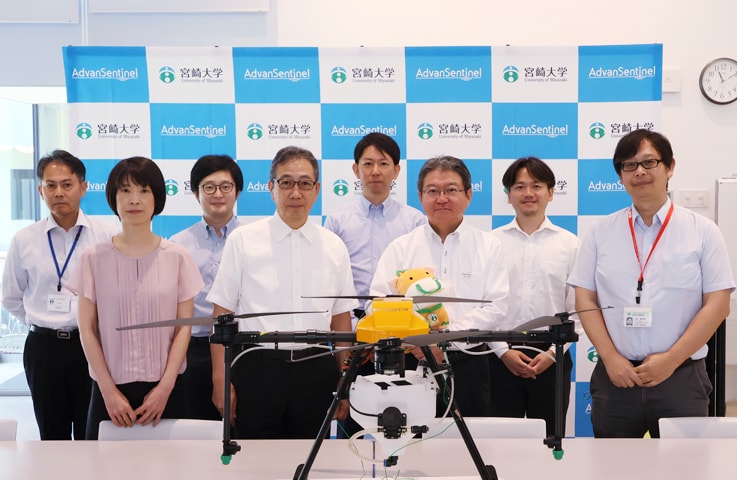
Professor Kentaro Yamada of CADIC (Department of Veterinary Science, Faculty of Agriculture) at University of Miyazaki is at far right in the front row in this photo of a collaborative research press conference held in June 2024
Breakthrough Technology from AdvanSentinel
AdvanSentinel, which was financed and established by Shimadzu and Shionogi & Co., Ltd, is developing technology related to virus detection and other infectious disease countermeasures. They aim to play an important role in public health and infectious disease countermeasures. In particular, their COPMAN method, a technique for enriching viruses from sewage, provides quick, high sensitivity virus detection.
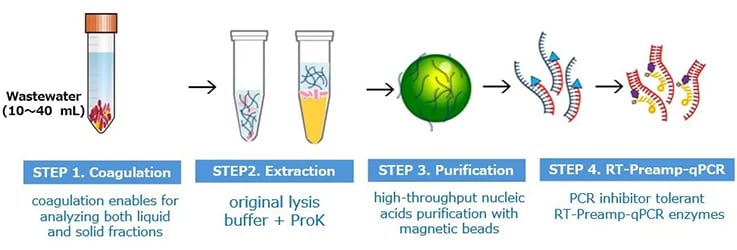
COPMAN method (Source: AdvanSentinel webpage)
A characteristic of the COPMAN method is the use of a coagulant to recover viruses contained in both liquid and solid phases, leading to the simultaneous extraction of DNA and RNA. The existence of a virus is then detected at high sensitivity based on the extracted genes. Extraction can be performed approximately three hours after treatment starts, which is effective for infectious disease countermeasures, which must be implemented quickly.
Research Contributes to Society
Because this high-sensitivity COPMAN method is effective, University of Miyazaki and AdvanSentinel have formally started collaborative research. In this collaborative research, work is progressing on widely applicable water collection methods, optimization, the establishment of detection methods, and the confirmation of practicality.
If this monitoring method is validated, both parties will deploy it nationwide as the “Miyazaki Model,” so as to reduce the occurrence of avian influenza at poultry farms, thereby stabilizing the provision of chicken meat and eggs.
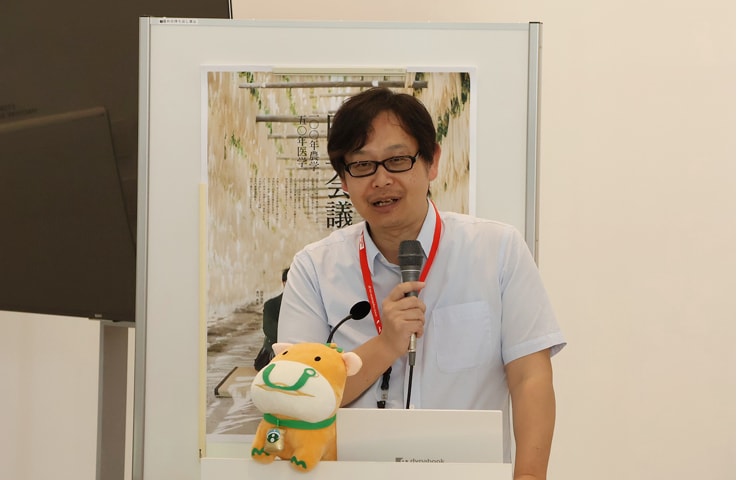
Professor Yamada notes that he wishes to prevent the huge loss of animal life involved in cullings. His belief is the driving force behind these initiatives.
Comment from the Person in Charge at AdvanSentinel
We learned about the seriousness of the damage caused by avian influenza from municipalities and people involved in agriculture in various regions in Japan. The lives of birds are snatched away in culling to prevent the spread of infections, and economic damage occurs at a level that causes changes to the livelihood of poultry farmers. Using technology that AdvanSentinel has cultivated through our experience with sewage, it is our hope that we can at least to some extent reduce the damage caused by avian influenza. Verification is proceeding with a number of municipalities outside of Miyazaki Prefecture, and we hope to establish a framework that both the nation and municipalities can use.
Video discussing the start of collaborative research projects by University of Miyazaki and AdvanSentinel From Myaoh.TV, the official YouTube channel of University of Miyazaki
Note: This video was created in Japanese.
 Page Title and URL Copied.
Page Title and URL Copied.


